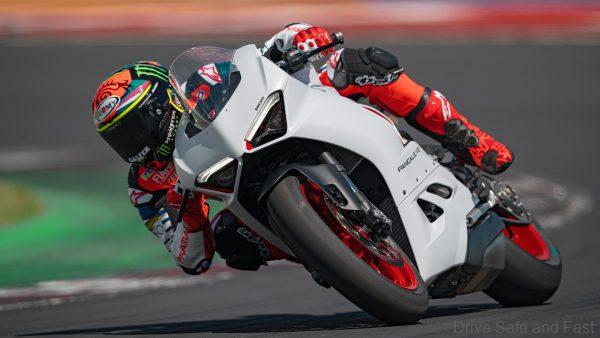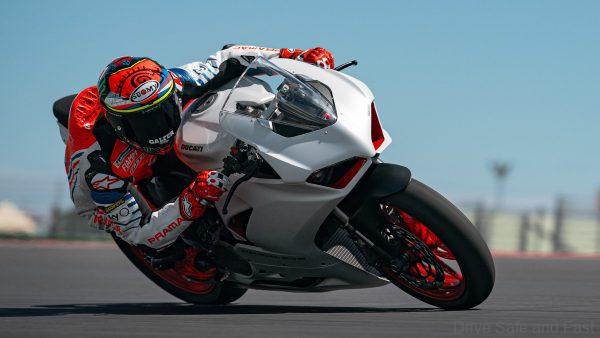Ducati in some parts of the world have just started taking bookings for 2020 model Panigale V2. This is the bike that replaces the famed Panigale 959.
This race breed precision riding machine will probably be launched in Malaysia before the end of 2020.
There are a handful of rivals to this bike starting with the Kawasaki ZX-10R to the Honda CBR1000RR. However, it is the Ducati that shows more charisma and detailing in its overall design. Check with Ducati Malaysia for more details and if you can put down a booking fee to be one of the very first to own and ride this new machine.

PRESS RELEASE: The colour range of the Panigale V2 consists of the classic, sporty monochrome Ducati Red and the new White Rosso livery where the purity of Star White Silk is interrupted by the energy of Ducati Red on the rims, the front air inlets and the deflector on the upper half fairing
The twin-cylinder Panigale has a completely new look and refined electronics thanks to the use of the Inertial Platform, and is even better performing and safer on the track, not to mention fully exploitable and enjoyable on the road thanks to a more comfortable seat and revised suspension setup.

Its name lets the lovers of Borgo Panigale twin-cylinders know that the model is powered by the 955 cm³ Superquadro.
The Panigale V2 replaces the previous 959 Panigale as the entry model for the Panigale supersport bike family.

Superquadro: The Ducati twin-cylinder
The 955 cm³ twin cylinder Superquadro engine complies with Euro 5 standards. Compared to the engine on the 959 Panigale it delivers an additional 5 hp and 2 Nm more of torque. it also features a new compact exhaust silencer, routed entirely underneath the engine.
With a maximum power of 155 hp at 10,750 rpm and a torque of 104 Nm at 9,000 rpm, this twin cylinder engine delivers power smoothly and enjoyably on the road while remaining forceful – yet always under control – on the track.

Monocoque frame
The Panigale V2 frame consists of a compact, enhanced-strength die-cast aluminium monocoque structure that uses the Superquadro engine as a stressed member.
Attached directly to the cylinder heads, the monocoque frame protrudes forward to house the steering head bearings, contained in two aluminium bushes. In addition to working as a frame, the monocoque also acts as an air-box; it contains not just the air filter but also the throttle bodies and the fuel circuit, complete with injectors, and is sealed off by the steel fuel tank bottom.
The front-end geometry has 24° of rake and 95 mm of trail. At the rear, instead, the double-sided swing-arm has been replaced with a sophisticated, fully die-cast aluminium single-sided swing-arm. The bike has a 1,436 mm wheelbase and weight distribution is 52% at the front and 48% at the rear.